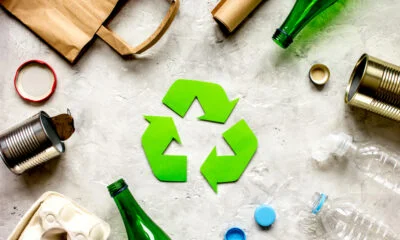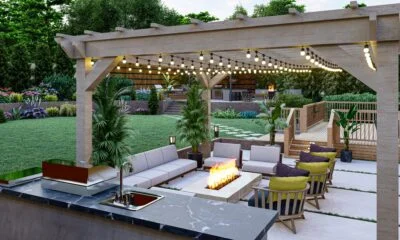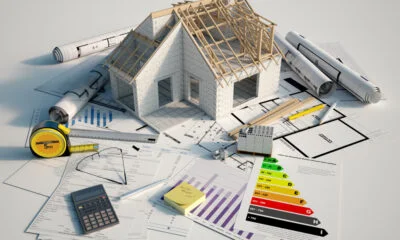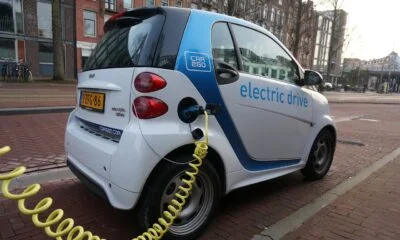

Energy
Squeezing More Function in Green Home Improvement
When you think about changing your home design, do you think about how it can affect the planet? Probably not. Chances are that when you’re in home remodeling mode, you’re too worried about things like the cost and other practical considerations to think about environmental impact. And you’re probably not alone: according to National Geographic’s Greendex Survey for 2014, people’s consumption habits aren’t changing in pace with their growing awareness about their impact on the environment.
Many may think that green home improvement will lead to a more inconvenient or impractical life, but that doesn’t have to be true. Saving the world doesn’t have to be an act of martyrdom. Little tweaks to your home renovation project can add up to big changes, letting you improve your home while keeping your carbon and water footprint light and small.
Keep Cool with Smarter Shade
A big factor in eco-friendly home design is energy conservation. The world is still heavily dependent on fossil fuels to produce energy despite their costs. Clean energy is not yet universally accessible, so we have to do our part by lessening consumption.
If you live in someplace warm with harsh sunlight coming in, consider having double-pane or tinted windows installed to decrease your dependence on the AC. Even something as simple as having the right window blinds and curtains can really help.
Insulate Your Home with Safer Stuffing
While keeping your place cold can be a serious energy drain, keeping it warm can also be a heavy load. The furnaces and heaters you use to keep comfortable on cold days can use a lot of electricity, especially if your home isn’t insulated well. Many homeowners looking to winter-proof their home are now choosing earth-friendly materials such as hemp, cotton, and sheep’s wool. Using those sustainable materials can help you stay toasty warm while keeping your carbon footprint at a minimum.
Live Life without Wasting Water
Also, think about how much water you use. Water should be a sustainable resource, but because of pollution, we have less water that we can use safely. To maximize the value of your green home improvements, you can install water-saving shower heads or high-pressure sink faucets (having aerators in your faucets to increase the pressure can actually help save water).
Pots and Plants Aplenty
Maybe for health reasons, you need to purify the air in your home. Rather than buying an expensive air purifier that will consume electricity, try using houseplants. Certain house plants can absorb volatile organic compounds and convert carbon dioxide into healthy levels of oxygen. Taking care of them can also be a stress-relieving exercise.
Bring New Life with Recycled Materials
If your home makeover involves installing new flooring or countertops, then go for recycled materials. Look for tiles that are made from recycled glass or plastic. Not only will you renew your space, you will also help give thrown-away materials a second life.
Turn Something Old into Something New
Among many possible green home remodeling ideas, one that doesn’t get enough attention is upcycling. It’s too temptingly easy to just throw away garbage, but with a little creativity, trash can be turned into treasures to transform your home. Make lighting fixtures out of old jars and shelves out of old crates. Whether you’re renovating a house or doing a green condo redesign, repurposing old materials is a great and simple option.
Doing Your Part with Smart Materials
Aside from recycled and upcycled materials, consider sustainable, long-life, or low-maintenance materials for your green home renovation ideas. Wood, bamboo, and cork are good sustainable flooring options; linoleum flooring, on the other hand, is durable and easy to clean, increasing the time between flooring replacements and decreasing your use of chemical solvents over the long run. Don’t be fooled by retailers calling plastic tiles “linoleum.” Genuine linoleum flooring is made from all-natural materials.
Go Green with Eco-friendly Colors
If you’re treating your home to a fresh coat of paint, consider its composition. Many conventional paints use VOCs that pollute the environment. For more eco-friendly home renovations, choose eco-friendly paints. Not only will they smell more pleasant, they’ll also be safer to manufacture (have you ever thought about all the chemical waste generated in making traditional paint)? Take note that these products have different degrees of earth-friendliness, so take special care in reading the label: watch out for any hazardous or toxic components that were not declared up front.
Lessen Your Impact with Lighting Options
Another simple way to reduce your carbon footprint is to use more energy-efficient lighting. Using compact fluorescent lamps (CFLs) or LED (light-emitting diode) lighting will help brighten your home using less electricity than traditional incandescent bulbs. Another plus: CFLs and LED lights generate less heat, so your home cooling systems don’t have to work twice as hard.
Use Filters for Freshwater
Maybe you’re concerned about the quality of your water supply, but you don’t want to rely on bottled water; think about all the plastic you’ll use if you do. In that case, you might consider getting a home water purifier installed. While not all water filtration systems are created equal, having one can definitely help you say “no” to plastic bottles more easily.
Let the Sunshine In
While the heat of the sun can be uncomfortable, you can use it right to have a more earth-friendly home. A growing trend in green home development is passive home design: the idea is to use as much solar energy as possible for your everyday needs, such as electricity and heating. Solar panels can be used to generate some clean energy, while solar heaters can help you get hot showers without having to plug in. More simply, you can use natural light for your space: bigger or more strategically placed windows and mirrors will light a room with beautiful sunshine.
So you see, it’s totally possible to come up with a functional home design while keeping the planet in mind. With the right attitude and thinking, anyone can be successful in maximizing their green home improvement efforts for a practical and earth-friendly home.






























